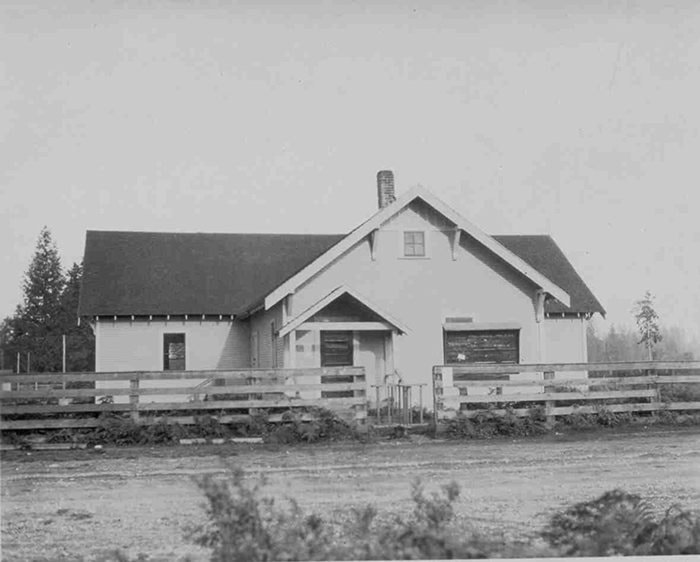The deed is done, on 24 April 1914 by Order in Council this community became a municipality and was free to call itself the District of Pitt Meadows. What came next?
 Well, on Monday 4 May 4 at 12 o’clock noon the first meeting of the Municipal Council was held in the Number One School House building at the corner of Harris and Hammond Roads, and, with returning officer W. J. Park present, the reeve and councilors as “elected” were “duly sworn in”. John Blaney, a two time Maple Ridge reeve, served as Pitt Meadows’ first reeve and councillors were W.R. McMyn, W. Reid, W. Richardson, R.H. Sharpe and Roland Thompson.
Well, on Monday 4 May 4 at 12 o’clock noon the first meeting of the Municipal Council was held in the Number One School House building at the corner of Harris and Hammond Roads, and, with returning officer W. J. Park present, the reeve and councilors as “elected” were “duly sworn in”. John Blaney, a two time Maple Ridge reeve, served as Pitt Meadows’ first reeve and councillors were W.R. McMyn, W. Reid, W. Richardson, R.H. Sharpe and Roland Thompson.
The council went right to work and passed the following resolutions: that W.J. Park act as clerk for the meeting; that all declaration papers and other election correspondence be filed; that W. J. Park be appointed clerk to the municipality at a salary of $50 per month; that the finance committee be empowered to borrow from the Bank of Hamilton at Hammond money to cover temporary expenses; that the clerk enquire as to the cost of incorporation and regarding revenue of the district; that the reeve and councillor Reid and Thompson, and the clerk be a delegation to Victoria regarding municipal matters; that the school account, $256.09, be arranged for at the bank; that the clerk be instructed to write to Ottawa regarding wharf at the end of Harris Road to get Douglas and Menzies in touch with the outside… The council also gave notice (as the rules of order) of a number of bylaws including road tax, solicitor’s appointment, introduction of industries, licences, temporary loan, common seal, and more. The group also appointed the finance committee - Reid and Thompson and the works and health committee - all councillors.
When all was done, the meeting adjourned with the date to reconvene as 2 p.m. on May 16. Short, pragmatic and quick and then the reeve, councillors and clerk likely left their unpaid service in the infant municipality and returned to their farms and businesses to carry on with their livelihoods.
Most of these first council members would sit for a number of years both off and on. John Blaney would take another turn as reeve in 1919 and again for four years between 1926 and 1929 and then again for a portion of 1930. Roland Thompson would serve on council for part of 1915 and then went off to war and never returned. Clerk W.J. Park became reeve in 1920 and remained in the position for four years. He would return to lead the community through most of the depression and the years of World War II. It was he, along with Mrs. Meeker, who planted the Royal Oak, on the lawn of what is now the Heritage Hall in 1937. The oak is there today tall and proud, giving shade to those who wait at the bus stop.
Next month we will look at some of the more unique business of the municipality’s early councils and what remains of these efforts at your local museum.
Leslie Norman is the curator of Pitt Meadows Museum and Archives.
